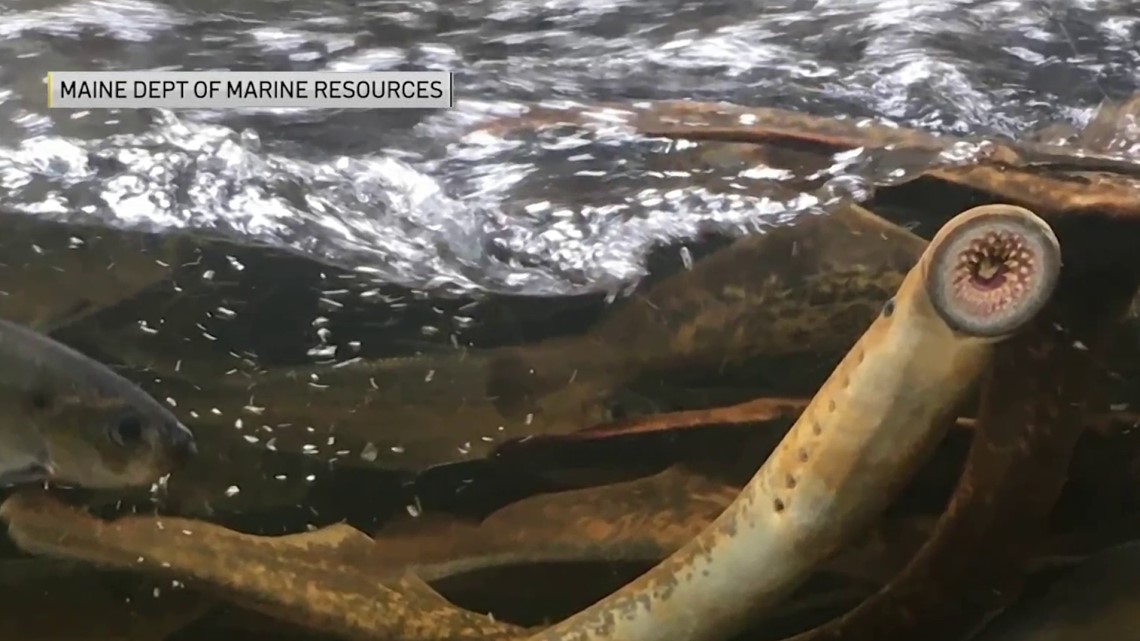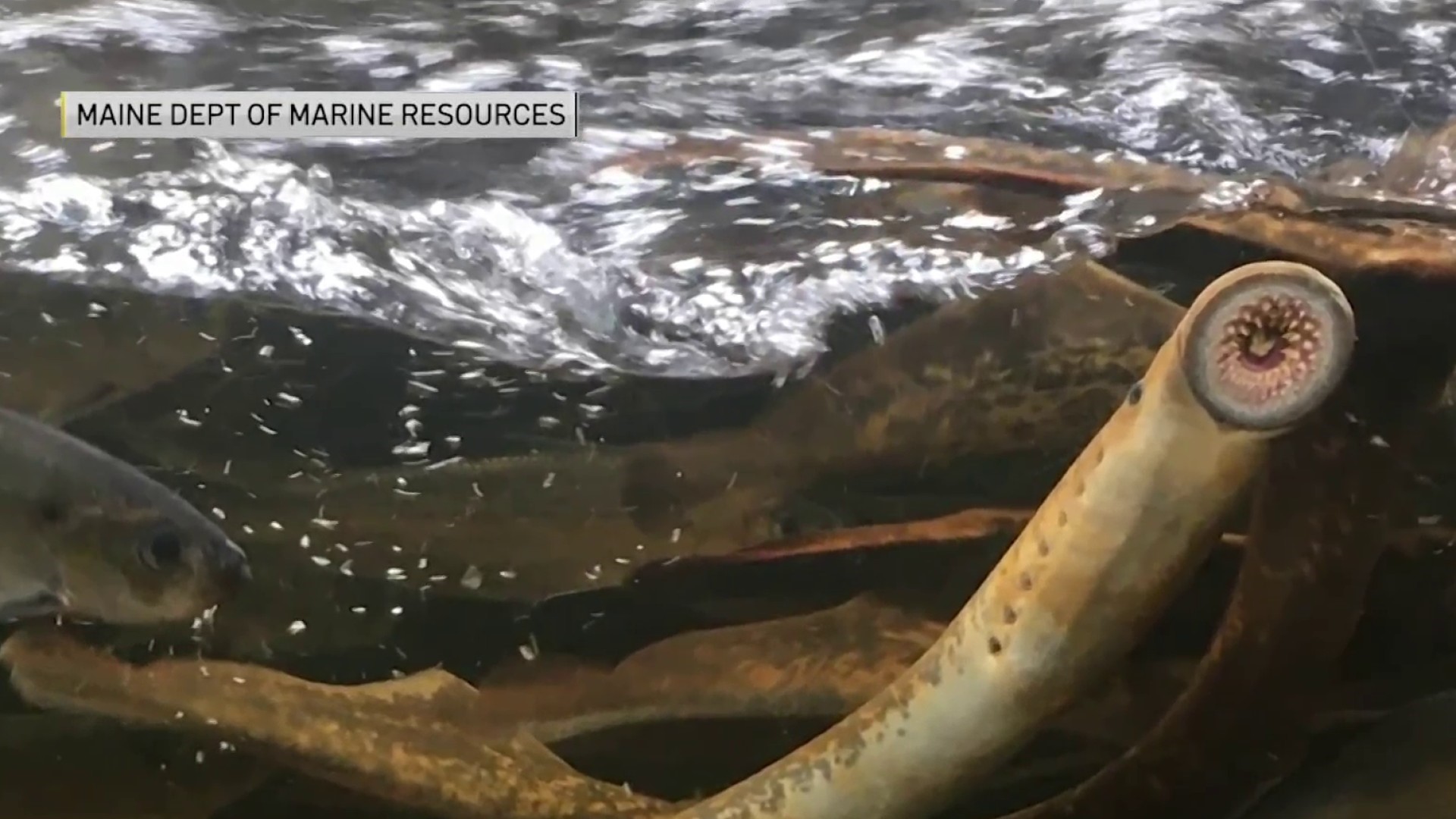BANGOR, Maine — Thousands of lamprey eels have been counted in a Maine river, but officials with the Department of Marine Resources say their presence is not necessarily a bad thing.
More than 5,000 lamprey eels, a rather terrifying looking fish, are in the Penobscot River near Bangor, according to Sean Ledwin, the director of the Sea-Run Fisheries and Habitat Division of the Maine Department of Marine Resources.
"They're slimy. They move mostly at night. They've got that creepy jaw. They've got scary looking eyes, they slither around like a snake, they grasp onto things tightly," Ledwin explained, listing some of the features of the creature, which traces its roots to prehistoric times.


Frightening as they are at first glance, the increasing numbers of lampreys are actually viewed as a success story in Maine, as opposed to the Great Lakes, where the fish are invasive and cause problems.
Ledwin told NECN and NBC10 Boston that $60 million has been invested in removing and improving dams and pathways for the creatures with gaping tooth-filled mouths to spawn in Maine rivers, bringing with them all kinds of benefits.
For the ecosystem, the fish take in nutrients from the ocean that enter the food chain while they use their mouths to build nests out of rocks. After the lamprey spawns and dies, other creatures like salmon eat their decomposing carcasses.
"Like earthworms do in your garden, they create food sources," explained Ledwin, adding that among other uses, lampreys can be used by scientists for tasks like cancer research because of their simple circulatory systems.
Rest assured, the lampreys won't attack anyone, Ledwin said.
They do nibble on animals like whales and sharks, latching onto them in the open ocean as a parasite that sucks blood and eats flesh while riding to another part of its habitat.
Because lampreys are not feeding and instead die after spawning, they ignore the legs of any humans.
"They can sleep a little easier knowing the lampreys are harmless," Ledwin said.
He also added he has eaten lamprey and says it is considered a delicacy in some parts of the world.

